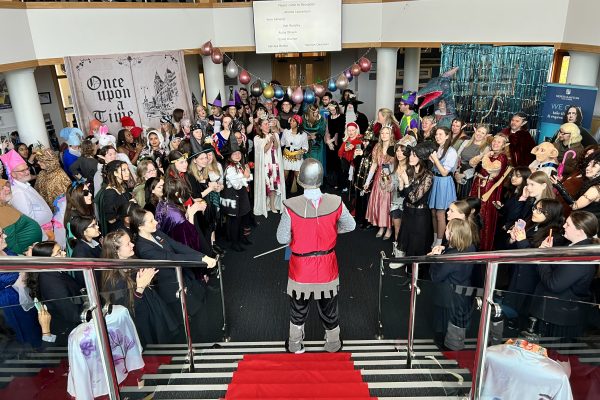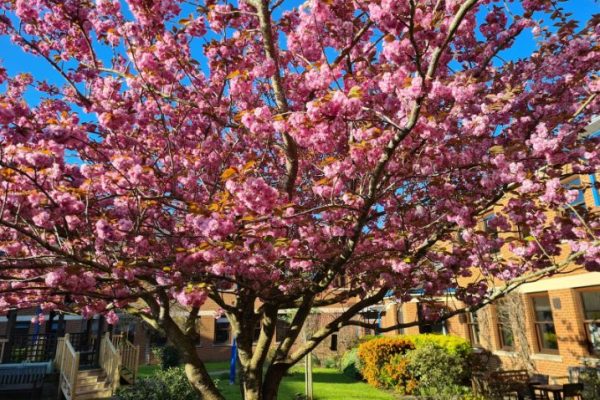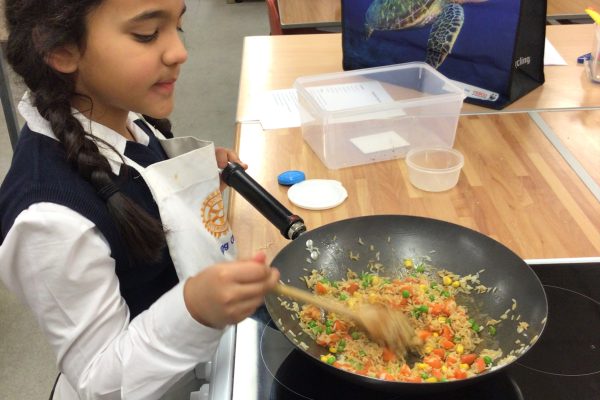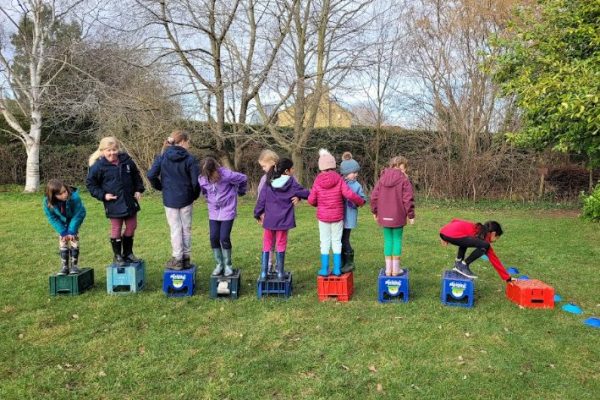Emblems and mottos, more than just pictures and words?
Northampton High School is celebrating its 145th birthday this year, a remarkable milestone that highlights the school’s long-standing reputation as a leading institution in girls-only education. Since its founding in 1878, the High School has nurtured generations of bright and ambitious young women, empowering them to achieve personal success and make a positive impact in the world. In this article we take a look at the history of the school and at how the images and words we associate with it play their part in bringing our ethos and values to life.
Northampton High School dates back to the late 19th Century, when a group of visionary women led by Miss Mary Pearson came together with a mission to provide quality education for girls in Northamptonshire. They opened the school in a small premises on Abington Street with under 20 pupils and just a handful of teachers.
Over the years, the school has grown in size and reputation, moving to several locations in Northampton, most notably the buildings in Derngate and Cliftonville, before settling in its current site on Newport Pagnell Road in Hardingstone in 1992. Today, the school is a thriving institution with over 500 pupils from ages 2 to 18, offering a broad and rigorous curriculum that prepares girls for success in a rapidly changing world.
Research has shown that girls-only schools offer many advantages over mixed-gender schools, including higher academic achievement, greater self-confidence and leadership skills, and a more inclusive and supportive learning environment. Girls in single-sex schools are more likely to study STEM subjects and pursue careers in traditionally male-dominated fields, such as engineering, technology, and finance.
Northampton High School’s commitment to girls-only education has been a fundamental part of its ethos since its founding. This approach recognises that girls have unique needs and challenges that can be best addressed in an environment that is designed specifically for them. Teachers who understand and buy into this ethos complete the picture; indeed any school is only as good as the professionals who bring the curriculum to life. We are grateful to have a highly-qualified and experienced teacher body whose high expectations, commitment and belief help our girls develop the confidence to fulfil their potential and achieve their ambitions.
When the beautiful cherry in Derngate courtyard comes into blossom, I know that we will soon be celebrating another year in this remarkable school’s journey. It is my favourite time to be in school. We all love the birthday assembly tradition, when the school’s oldest and youngest pupils cut the cake and we come together as one to celebrate our vibrant community.
Of course, anniversaries and birthdays are important milestones for any community. They allow us to pause and reflect on our shared history, to acknowledge our achievements and our challenges, and to renew our commitment to our core values and mission. The celebration of Northampton High School’s 145th birthday is an opportunity to reflect on the school’s rich history and legacy, as well as its ongoing commitment to providing a world-class education for girls.
One part of our legacy is seen in the imagery and words we have chosen to represent the school over time. In particular, we are often asked about the school crest, its design, history and meaning. It is perhaps worth reflecting on this, along with our mottos, as representing a kind of shorthand for our values and our place in the community. Of course, they also speak to our ambitions for the young people whose early experiences of the world are ours to guide, nurture and enhance.
Miss Alice Straker, who led the school for 21 years from December 1890, introduced the school’s original motto ‘The Utmost for the Highest’. The school also became known as Northampton High School for Girls under her tenure. While the words ‘for girls’ were removed in the latter part of the 20th Century (largely to avoid confusion with a newly renamed local school!), we are still known by this longer name by many people. However, for most, the school is simply known as the High School and thus retains this link to Miss Straker’s vision for a school that would stop at nothing to champion and inspire young women to reach higher and achieve their ambitions.
In the original crest we see symbols for the county and the town through the Northamptonshire rose and the castle that is featured in the town’s coat of arms. The castle is said to have rivalled many of the most imposing structures of the time and was destroyed following the Restoration as a punishment for the town’s support of the Parliamentarians in the Civil War. The school’s original links with the church are seen in the other half of the crest. The keys on the right represent the Diocese of Peterborough, while the symbol with 4 crosses on the left remains something of a mystery and any local historians who might know more about its significance are warmly invited to get in touch.
When Dr Helen Stringer joined the school in the mid 2010’s the school logo and motto were renewed. In the modern crest we celebrate the school’s link to the town and its former home in Derngate via a representation of the artwork on the door of 78 Derngate. This house was formerly used as Sixth Form classrooms by the school and was famously designed and remodelled by Charles Rennie Mackintosh. Now, of course, it is the centrepiece of Northampton’s most popular visitor attraction, celebrating the renowned architect’s last major commission.
Our current location in Hardingstone is also referenced in the new crest, represented by the Queen Eleanor Cross, only a few hundred metres from the school and possibly Northampton’s most important historical monument. It is one of the only remaining crosses erected by Edward I along the route of the funeral procession of his late queen, Eleanor of Castile. Eleanor’s life was fascinating and this podcast offers an intriguing insight into the story of one of our lesser known queens.
We retain a tribute to the school’s historical status as a church school in the current crest, via the Dioscian keys. Of course, since the school joined the GDST in the early 2000s, we are now non-denominational as reflected in our diverse and vibrant student and staff body. However, the universal Christian values of kindness, charity and service remain at the heart of our ethos and these are marked out in the daily lives of everyone in school. The rose, as well as being the emblem of the county, also represents our girls themselves. As such, it is used as the symbol for our alumnae, every student leaving the Sixth Form being given a yellow rose to represent her time at the school and the flourishing future that awaits her.
Northampton High School’s 145th birthday is a cause for celebration and reflection. As we mark this milestone, we honour the school’s rich history and the thousands of young women who have passed through its doors, and we look forward to a future of continued excellence in girls’ education. Through the school’s modern motto, ‘We believe in our girls and they believe in themselves’, we hope that we remain true to the original spirit and ethos of the school. A school that proudly puts girls first and helps them to ride high and confidently meet the challenges of life.
To finish I would like to quote from an article I found while researching this piece. I’ve not been able to trace the writer, so if anyone knows who penned this, please do let us know. I hope this former pupil will not mind my using her lines, though, as I think they are in a spirit that is as true of the school today as when she attended Derngate herself in the 1960s. I heartily recommend reading the whole blog if you have a moment to spare.
For me school was a safe, protected and predictable environment at a time when my home life was dominated by worry and uncertainty. A lot was expected of us but I think that was a good thing for me, I probably needed to be pushed in order to do my best, but school wasn’t just about results. I did better than anyone expected in my exams but more importantly I left school with a wealth of poetry in my head, passion for history, a love of art, a desire to read and a need to write, and all those things have remained with me ever since.
Mr Rickman
Deputy Head – Academics








